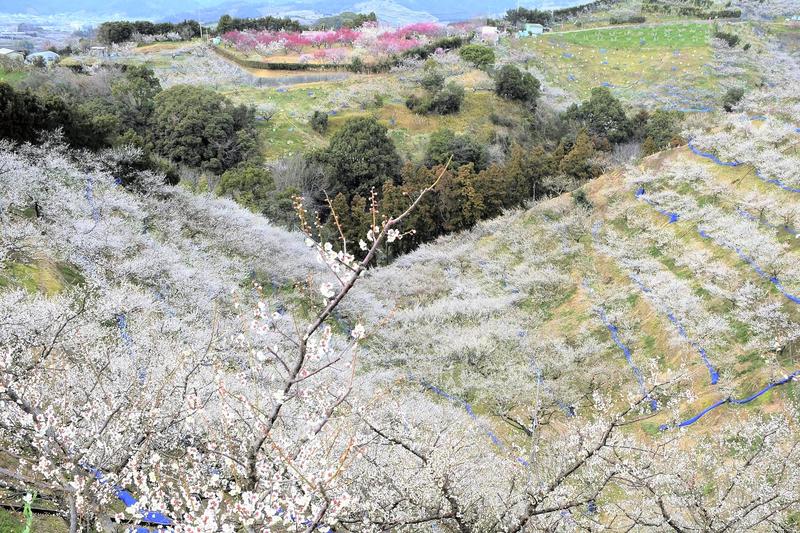
The Agriculture, Forestry and Fisheries Ministry is grappling with low public recognition of Globally Important Agricultural Heritage Systems (GIAHS) and Japanese Nationally Important Agricultural Heritage Systems (JNIAHS). The reason behind the lack of recognition seems to be the inherently intangible nature of what can be designated under either of the systems.
The GIAHS was established by the U.N. Food and Agriculture Organization as a means of preserving farming methods and cultures unique to regional areas. The JNIAHS is the Japanese version of the GIAHS, established by the agriculture ministry.
Back in November, photos of JNIAHS-designated areas were displayed on screens at JR Shibuya Station in Tokyo. Among them were photos of a paddy field in the Chuetsu region of Niigata Prefecture and a field in the Musashino area of Saitama Prefecture, where the fallen leaves from local trees including kunugi oak trees are used as compost.
"I had never heard of an agricultural heritage," said a woman from Setagaya Ward, Tokyo. "It would be a waste if such a beautiful area went unknown despite having received recognition."
The agriculture ministry for the first time allotted 10 million yen in the previous fiscal year's budget with the aim of boosting public awareness of the agricultural assets. An additional 8 million yen was also secured this fiscal year, allowing for promotional videos to be shown at railway stations and aboard trains mainly in the metropolitan area through the month of November.
Ministry officials took advantage of their time while teleworking as a means of curbing the spread of the novel coronavirus by volunteering to make videos introducing recipes including ingredients grown within the designated areas.
The ministry says that one of the merits of the JNIAHS designation is that it "will help build pride in the region and contribute to the revitalization of regional economies through the branding of its agricultural, forestry and fishery products and boosting the number of tourists." Locals, however, have only slightly felt the designation's impact.
The town of Minabe in Wakayama Prefecture was designated a GIAHS site in 2015 for making use of its slopes in the cultivation of ume plums. Although representatives from other municipalities at one time came to observe the process one after the other, the amount of ume the town has harvested hasn't increased much from 30,000 tons in 2015.
"Even though five years have passed since the [GIAHS] designation, we often hear from our producers that 'its effect has yet to be seen.'"
The Aso area in Kumamoto Prefecture, which has maintained the nation's largest grassland area through techniques such as field burning and grazing, became GIAHS-registered in 2013.
"Because Aso has been a tourist area from the beginning, it's difficult to know how much the number of tourists has increased as a result of the designation," said a prefectural government official.
Project Prof. Kazuhiko Takeuchi at the University of Tokyo, an expert in regional ecology who is knowledgeable about agricultural heritages, said: "Agricultural heritage sites are harder to recognize than tangible architectural structures and historic sites. If the cultures and histories behind the areas are made more well-known, it may be possible to provide future generations a chance to become interested in the agriculture and forestry industries, areas that are suffering a serious shortage of manpower."
Read more from The Japan News at https://japannews.yomiuri.co.jp/







